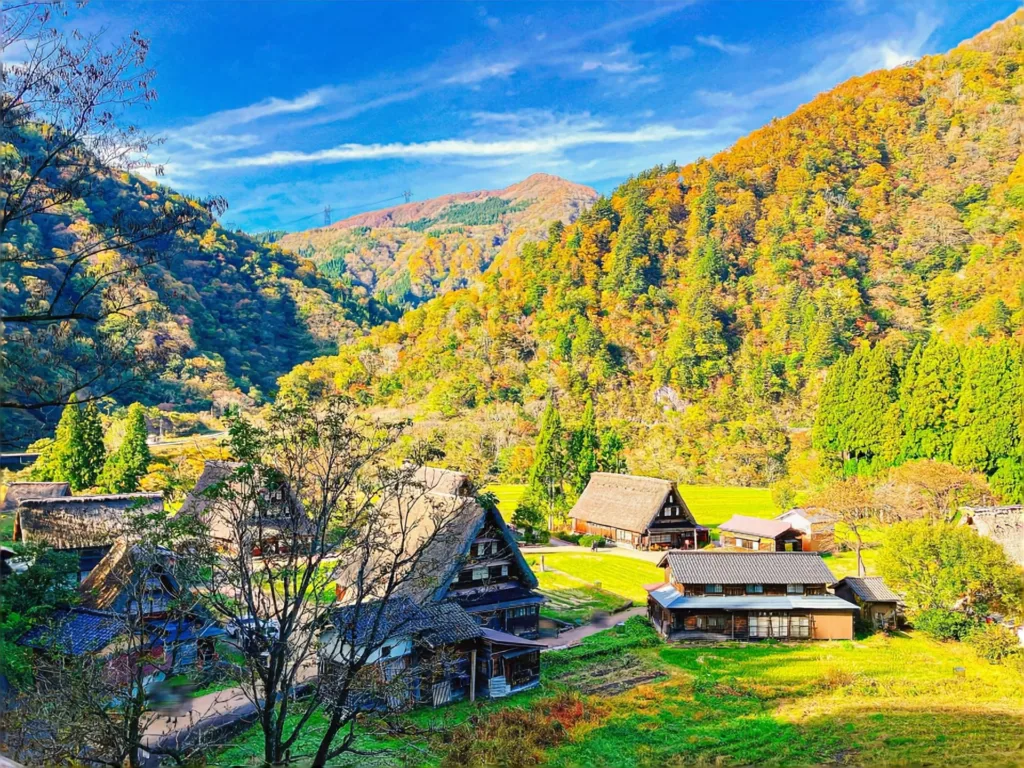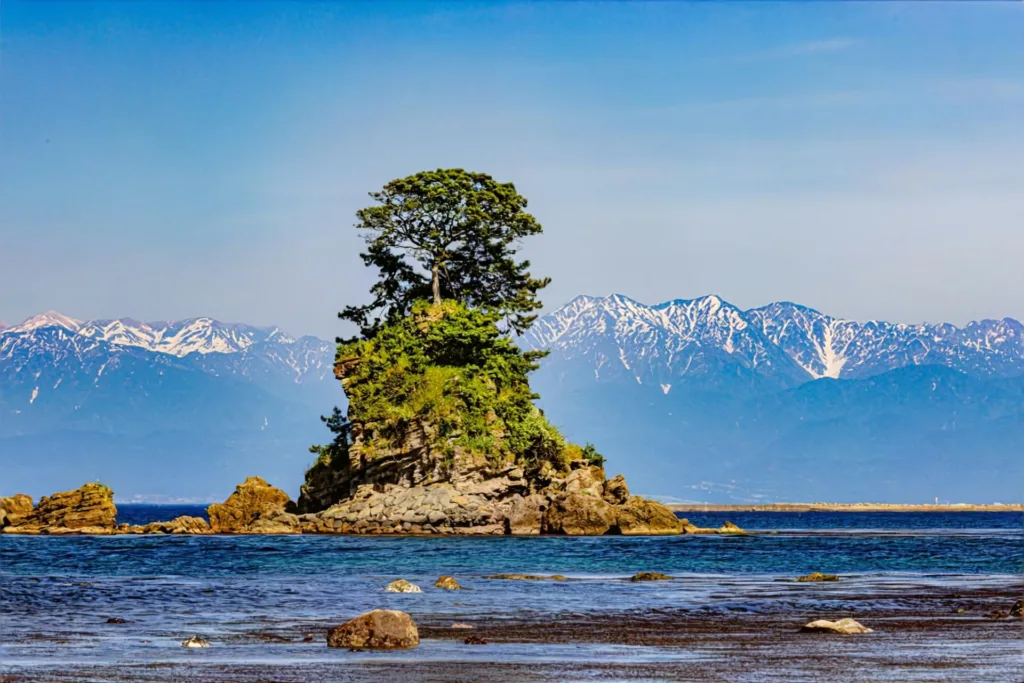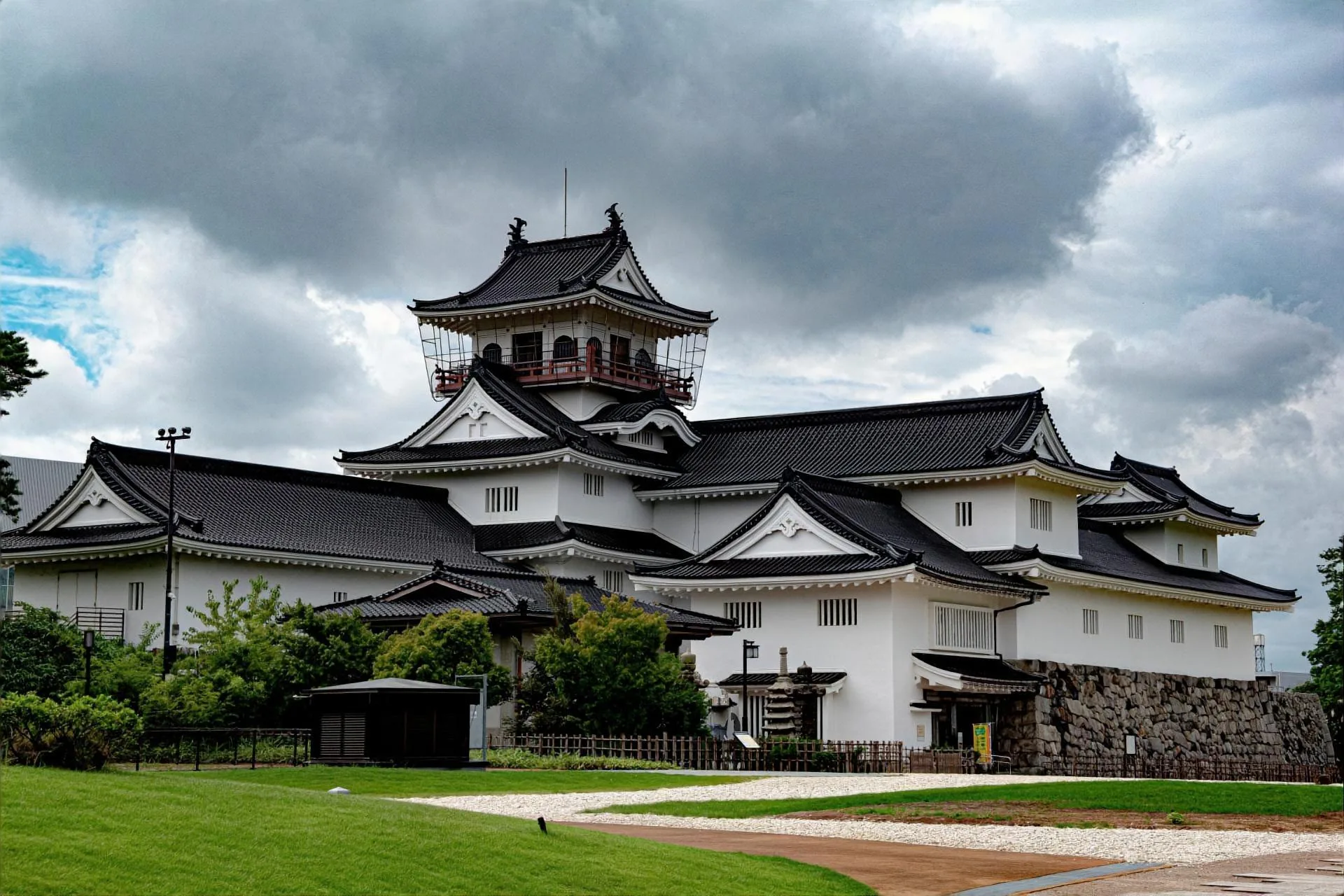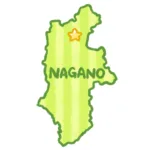Toyama Prefecture is located in the center of the Hokuriku region of Japan, surrounded by mountains on three sides and facing Toyama Bay to the north. The elevation difference from the 3,000-meter peaks of the Northern Japan Alps to Toyama Bay reaches 4,000 meters, creating a rich natural environment and spectacular seasonal landscapes that captivate visitors.
In addition to its natural beauty, Toyama is known for its traditional crafts, culture, and exceptional seafood cuisine that has been passed down through generations. In 2025, Toyama City was selected as one of “52 Places to Go” by The New York Times, gaining international recognition as a must-visit destination.
This article introduces ten recommended tourist attractions in Toyama Prefecture that are especially appealing to international visitors. From majestic mountains to traditional villages and modern museums, experience the diverse charms of Toyama.
- 1. Tateyama Kurobe Alpine Route: A Mountain Sightseeing Route with Breathtaking Views
- 2. Gokayama Gassho-style Villages: Historic Thatched-roof Hamlets in a Hidden Valley
- 3. Kurobe Gorge Railway: A Trolley Train Through a V-shaped Canyon
- 4. Toyama Glass Art Museum: Experience World-class Glass Art
- 5. Fugan Canal Park: An Urban Oasis and Waterfront Promenade
- 6. Unazuki Onsen: Relax in Hot Springs at the Gateway to the Gorge
- 7. Takaoka Zuiryuji Temple: A National Treasure Zen Temple with Kaga Domain Heritage
- 8. Hotaruika Museum: Encounter Mysterious Luminescent Sea Creatures
- 9. Tonami Tulip Park: A Colorful Carpet of Flowers
- 10. Toyama Bay: A Treasure Trove of Seafood, “The Natural Fish Tank”
- Tourism Access Information
- Summary
- References & Information Sources
1. Tateyama Kurobe Alpine Route: A Mountain Sightseeing Route with Breathtaking Views

The crown jewel of Toyama’s tourist attractions is undoubtedly the Tateyama Kurobe Alpine Route. This approximately 90km mountain sightseeing route connects Tateyama Station in Toyama Prefecture to Ogizawa Station in Nagano Prefecture, allowing visitors to enjoy the magnificent scenery of the Northern Japan Alps while transferring between various types of transportation.
The Tateyama Kurobe Alpine Route cuts through the Northern Japan Alps with peaks over 3,000 meters, making it one of the world’s most spectacular mountain sightseeing routes. Visitors can easily travel across the mountains by transferring between cable cars, ropeways, trolley buses, and more from Tateyama Station in Toyama Prefecture to Ogizawa Station in Nagano Prefecture.
One of the most famous attractions is the “Snow Corridor” that can be seen from spring to early summer. The Murodo area at an elevation of 2,450 meters is one of the snowiest regions in the world, and the “Otani Area” accumulates particularly deep snow due to its terrain. In 2025, the Snow Corridor walls reach 16 meters in height (the record is 20 meters set in 2000), and the experience of walking between these massive snow walls is uniquely Japanese. In summer, visitors can enjoy alpine flowers, while autumn brings beautiful fall foliage, offering different scenery with each season.
Another must-see spot along the Alpine Route is Kurobe Dam. This massive hydroelectric dam is one of the largest in Japan, with a height of 186 meters—the tallest in Japan. The water discharge, which releases more than 10 tons of water per second, is truly impressive. The tourist water discharge operates annually from June 26 to October 15, and on sunny days, you might even see rainbows formed in the mist.
The Tateyama Kurobe Alpine Route, with its magnificent scale and diverse landscapes, allows visitors to fully appreciate the natural beauty of Japan. If international tourists are looking for “authentic Japan,” this is definitely one of the places they should visit.
[Basic Information for Tateyama Kurobe Alpine Route]
- Address: Ashikuraji, Tateyama-machi, Nakaniikawa-gun, Toyama Prefecture
- Access: About 1 hour from Toyama Station on the Toyama Chiho Railway to Tateyama Station
- Operating Season: Mid-April to late November (may vary depending on weather conditions)
- Official Website: https://www.alpen-route.com/
2. Gokayama Gassho-style Villages: Historic Thatched-roof Hamlets in a Hidden Valley

Located in Nanto City, Toyama Prefecture, the Gokayama region is home to the “Gokayama Gassho-style Villages,” which were registered as UNESCO World Cultural Heritage sites in 1995. Here, you’ll find two villages, “Ainokura” and “Suganuma,” where traditional thatched-roof houses called “gassho-zukuri” have been carefully preserved.
In Gokayama, you can have the rare experience of “staying at a World Heritage site” in a gassho-style inn. You can savor mountain delicacies such as grilled iwana (char) and wild vegetables, and enjoy conversations around an irori (traditional hearth)—a special moment unique to this World Heritage site.
For a long time, this area was considered a hidden region due to its steep terrain and heavy snowfall that limited contact with the outside world. There’s a legend that warriors from the Heike clan who were defeated in the Genpei War at the end of the Heian period escaped and settled here, giving the area the name “Ochudo no Kakurezato” (the hidden village of the fallen warriors).
During the Edo period, the area came under the control of the Kaga Domain, and under its protection, the production of gunpowder ingredient saltpeter (ensho), sericulture, and washi paper-making flourished, supporting the lives of residents. The gassho-style houses were built as combination residences and workshops for these products. The “yui” spirit of mutual assistance is still deeply rooted here, as seen in the community-wide reroofing of thatched roofs, and this community solidarity has preserved the unchanging landscape for hundreds of years.
Ainokura Village has 20 gassho-style houses, while Suganuma Village has 9. Compared to Shirakawa-go in Gifu Prefecture, the villages are slightly smaller in scale but less commercialized, offering a quieter, more authentic atmosphere where you can truly experience the traditional rural landscape of Japan.
The scenery of Gokayama changes with the seasons, offering spectacular views throughout the year. The new greenery of spring, the lush mountains of summer, the autumn foliage, and especially the snow-covered winter landscape are all beautiful. Winter illuminations are particularly magical, attracting many photographers and tourists.
[Basic Information for Gokayama Gassho-style Villages]
- Address: Ainokura and Suganuma, Nanto City, Toyama Prefecture
- Access: About 1 hour and 15 minutes from Shin-Takaoka Station by World Heritage Bus
- Opening Hours: Year-round (individual facilities have operating hours)
- Entrance Fee: Free (some museums and facilities charge fees)
- Official Website: https://gokayama-info.jp/
3. Kurobe Gorge Railway: A Trolley Train Through a V-shaped Canyon

Located in eastern Toyama Prefecture, in Kurobe City, “Kurobe Gorge” is Japan’s deepest V-shaped canyon, carved out over many years by the Kurobe River flowing from the Northern Japan Alps to the Sea of Japan. The best way to enjoy this dynamic gorge scenery is by riding the “Kurobe Gorge Railway.”
The “Trolley Train” runs approximately 20km from Unazuki to Keyakidaira in the Kurobe Gorge at an average speed of 16km/h, taking about 80 minutes one way. The railway track gauge is 762mm, about half that of a Shinkansen, and is one of only three narrow-gauge railways in Japan.
This trolley train was originally built for transporting materials for hydroelectric power development in the Kurobe River but is now used for tourism. Riding in open-air cars and feeling the breeze of the valley while traveling is a special experience.
Unazuki Onsen, the gateway to Kurobe Gorge, is the largest hot spring resort in Toyama Prefecture. Established in 1923, it has been popular with many tourists. The waters of Unazuki Onsen are famous as “beauty hot springs.” After a day of sightseeing on the trolley train, you can relax in the Unazuki Onsen baths.

From the train windows, you can see spectacular sights such as the bright red Yamabiko Bridge spanning Lake Unazuki, the 60-meter high Atobiki Bridge over the Kuronagi River, and Kinshokan, a famous spot for autumn leaves. The autumn foliage season is particularly spectacular when the entire gorge is vividly colored.
Along the railway, there are secluded hot springs such as Kuronagi Onsen and Kanetsuri Onsen, and the open-air baths in nature are exceptional. Around Keyakidaira Station, the terminus of the trolley train, there are many sightseeing spots such as Okane Bridge and Sarutobi Gorge, and you can also enjoy trekking.
[Basic Information for Kurobe Gorge Railway]
- Address: 11 Kurobe-kyokoku-guchi, Kurobe City, Toyama Prefecture (Unazuki Station)
- Access: From Kurobe Unazuki Onsen Station on the Hokuriku Shinkansen, take the Toyama Chiho Railway to Unazuki Onsen Station, then walk 5 minutes
- Operating Season: Mid-April to late November
- Fare: Unazuki-Keyakidaira Round Trip: Adults 4,960 yen, Children 2,480 yen
- Official Website: https://www.kurotetu.co.jp/
4. Toyama Glass Art Museum: Experience World-class Glass Art

Located in central Toyama City, the “Toyama Glass Art Museum” is a museum specializing in contemporary glass art. The museum opened in 2015 and is housed in “TOYAMA KIRARI,” a complex designed by world-renowned architect Kengo Kuma.
“The Glass Town of Toyama.” Toyama City is one of the world’s leading glass towns, home to the Toyama Glass Institute, which nurtures glass artists, the Toyama Glass Studio, which supports artists’ creative activities, and the Toyama Glass Art Museum, where visitors can appreciate glass art.
The symbol of the museum is the large-scale installation work “Glass Art Garden” by Dale Chihuly, a master of contemporary glass art. The fantastical space filled with colorful glass works throughout makes a strong impression on visitors.
The museum showcases the “Glass Art Garden” created by Dale Chihuly, a world-renowned glass sculptor. It also houses a permanent collection of glass works from around the world and various special exhibitions, allowing visitors to appreciate glass art from Japan and abroad. The same building houses the Toyama City Library Main Branch, creating a space where glass art and book culture merge.
There is also a café in the museum where visitors can relax between viewings. The café serves dishes using “fu” (wheat gluten), a Toyama specialty, and visitors can enjoy local flavors.
[Basic Information for Toyama Glass Art Museum]
- Address: 5-1 Nishicho, Toyama City, Toyama Prefecture, inside TOYAMA KIRARI
- Access: From JR Toyama Station, take the city tram to “Nishicho” or “Grand Plaza Mae” Station, about 1-2 minutes walk
- Opening Hours: 9:30-18:00 (until 20:00 on Fridays and Saturdays)
- Closed: 1st and 3rd Wednesdays of the month (next day if a holiday), New Year’s holidays
- Admission Fee: Collection Exhibition 200 yen for adults (separate fee for special exhibitions)
- Official Website: https://toyama-glass-art-museum.jp/
5. Fugan Canal Park: An Urban Oasis and Waterfront Promenade

Located in the center of Toyama City, “Fugan Canal Park” is a waterfront park created by redeveloping a former industrial canal. The harmonious blend of beautiful waterscapes and urban scenery makes it a popular spot for both locals and tourists.
The symbol of the park is the “Tenmon Bridge,” a unique rotating bridge that rotates a full 360 degrees several times a day. The bridge demonstration lasts about 3 minutes, and watching its elegant transformation is a highlight.
The park also features a “Kira Kira Bridge” decorated with glass, which shines beautifully in the sunlight during the day and is illuminated at night. The entire park is designed around the themes of water and light, and the nighttime illumination creates a magical atmosphere.
Seasonal landscapes are also attractive, with cherry blossoms blooming in spring, cool breezes in summer, autumn leaves reflecting on the water surface in fall, and snow scenes and light illuminations in winter.
The “Toyama Prefectural Museum of Art and Design” is located on the north side of the park, creating a space where art and nature merge. From the museum’s rooftop garden, “Onomatopoeia Rooftop,” visitors can enjoy a panoramic view of the Tateyama Mountain Range.
[Basic Information for Fugan Canal Park]
- Address: Minato Irifune-cho, Toyama City, Toyama Prefecture
- Access: About 20 minutes on foot or 10 minutes by bus from JR Toyama Station
- Opening Hours: Open 24 hours (some facilities have limited hours)
- Admission Fee: Free
- Tenmon Bridge Rotation Times: 10:00, 12:00, 14:00, 16:00 (may vary by season)
- Official Website: https://www.kansui-park.jp/
6. Unazuki Onsen: Relax in Hot Springs at the Gateway to the Gorge

Located in eastern Toyama Prefecture, in Kurobe City, “Unazuki Onsen” is known as the largest hot spring resort in Toyama Prefecture. Situated at the entrance to Kurobe Gorge and serving as the gateway for the trolley train, this hot spring town allows visitors to enjoy both hot springs and nature in one location.
The waters of Unazuki Onsen are famous as “beauty hot springs.” The transparent, weak alkaline quality is gentle on the skin, making it perfect for self-pampering. The water temperature at the source is about 90 degrees Celsius, warming you from the core.
Various ryokans (Japanese inns) and hotels of all sizes line the hot spring town, each welcoming tourists with their unique hot springs and cuisine. In addition to staying overnight, there are several facilities that offer day-trip bathing, making it possible to enjoy the trolley train and hot springs in a single day trip.
Strolling around the hot spring town is also enjoyable. You can visit the hot spring fountain, which is the symbol of the town, foot baths, souvenir shops, and more, spending a relaxing time. Walking along the riverside promenade lets you enjoy the clear streams and mountain scenery.
In winter, you can enjoy hot springs with snow views, and there’s also the Unazuki Ski Resort nearby, making it popular for combining winter sports with hot springs. Unazuki Onsen, which shows different expressions throughout the four seasons, is also an ideal base for Toyama sightseeing.
[Basic Information for Unazuki Onsen]
- Address: Unazuki Onsen, Kurobe City, Toyama Prefecture
- Access: From Kurobe Unazuki Onsen Station on the Hokuriku Shinkansen, take the Toyama Chiho Railway to Unazuki Onsen Station
- Hot Spring Type: Simple alkaline hot spring
- Benefits: Beauty effects, helps with cold sensitivity, fatigue recovery, etc.
- Official Website: https://www.unazuki-onsen.com/
7. Takaoka Zuiryuji Temple: A National Treasure Zen Temple with Kaga Domain Heritage

Located in Takaoka City, Toyama Prefecture, “Zuiryuji Temple” is a Soto Zen temple built in 1663 as the family temple of Toshiie Maeda, the second lord of the Kaga Domain. In 2017, three structures—the Sanmon (main gate), Butsuden (Buddha hall), and Hatto (dharma hall)—were designated as National Treasures, making it a representative historical building in the Hokuriku region.
Zuiryuji Temple is the family temple of Maeda Toshinaga, the second lord of the Kaga Domain. It was built by the third lord, Toshitsune Maeda, to commemorate Toshinaga. The temple complex, typical of Zen Buddhism in the early Edo period, showcases the power and grandeur of the prosperous Kaga Domain’s 1.2 million koku.
The main highlight of Zuiryuji Temple is that the “Shichido Garan” (seven main buildings of a Zen temple) remains almost completely preserved. The strict arrangement of the Sanmon, Butsuden, and Hatto in a straight line conveys the Zen style of the early Edo period.
The decorations on the buildings are also magnificent, with intricate carvings and ceiling paintings. The interior of the National Treasure Butsuden is lavishly decorated with gold leaf and colors, reflecting the wealth and aesthetic sensibility of the Kaga Domain with its million koku of rice.
The temple grounds contain various historical buildings and offer seasonal landscapes. Cherry blossoms in spring, fresh greenery in summer, autumn leaves in fall, and snow scenes in winter—Zuiryuji Temple shows different expressions with each season, allowing visitors to enjoy the beauty of Japanese architecture and gardens.
[Basic Information for Zuiryuji Temple]
- Address: 35 Sekimoto-machi, Takaoka City, Toyama Prefecture
- Access: About 15 minutes by bus or 30 minutes on foot from JR Takaoka Station
- Visiting Hours: 9:00-16:30 (may vary by season)
- Admission Fee: Adults 700 yen, Junior and Senior High School Students 300 yen, Elementary School Students 100 yen
- Official Website: https://www.zuiryuji.jp/
8. Hotaruika Museum: Encounter Mysterious Luminescent Sea Creatures

Located in Namerikawa City, Toyama Prefecture, the “Hotaruika Museum” is a museum dedicated to “Hotaruika” (firefly squid), a spring seasonal feature of Toyama Bay. Firefly squid are bioluminescent creatures that emit a blue-white light from their entire body, and Toyama Bay is known worldwide as one of their major habitats.
Firefly squid are known for their blue-white glow, and their brilliance in the sea resembles the beauty of the cosmos. The “Hotaruika Museum” is a facility where you can learn about the ecology of these firefly squid and the mysteries of Toyama Bay through hands-on experiences.
Inside the museum, the ecology and mechanism of firefly squid bioluminescence are explained in an easy-to-understand manner using videos, panels, and dioramas. The main attraction is the “Firefly Squid Luminescence Show,” where you can observe actual glowing firefly squid up close in the live theater. Their mystical blue light resembles stars in the sea.
The museum also introduces marine life from Toyama Bay in detail, and there’s a touch pool where you can actually touch sea creatures. With features that both children and adults can enjoy, it’s a facility where you can experience the mysteries of the sea up close.
From late March to mid-May, you can see the “mass beaching of firefly squid” along the coast, where many firefly squid gather in shallow waters after spawning, creating a blue glow—a spectacular sight. The restaurant attached to the museum serves fresh firefly squid dishes.
[Basic Information for Hotaruika Museum]
- Address: 410 Nakagawara, Namerikawa City, Toyama Prefecture
- Access: From Toyama Station, take the Ainokaze Toyama Railway to Namerikawa Station, then walk about 8 minutes
- Opening Hours: 9:00-17:00 (last entry 16:30)
- Closed: Tuesdays from June 1 to March 19 (next day if a holiday), New Year’s holidays
- Admission Fee: Adults 800 yen, Elementary and Junior High School Students 400 yen
- Official Website: https://hotaruikamuseum.com/
9. Tonami Tulip Park: A Colorful Carpet of Flowers

Tonami Tulip Park, located in Tonami City, Toyama Prefecture, is known as one of the largest tulip spots in Japan. The Tonami Plain is the top producer of tulip bulbs in Japan, and this park was created to showcase their beauty to a wide audience.
Tonami City’s specialty and city flower is the tulip. In spring, about 300 varieties and 3 million tulips bloom brilliantly in the park. The ground picture made of tulips appears in the large flower bed, and you can enjoy the spectacular view from the Tulip Tower or Panorama Terrace.
The “Tonami Tulip Fair,” held annually from late April to early May, is a flower festival representing Japan with a history of about 100 years. Visitors from Japan and abroad come to see the spectacle of colorful tulips blooming across the field—truly a “carpet of flowers.”
Inside the park, there is the “Shiki Saikan” exhibition facility about tulips, where you can learn about the history of tulips, cultivation methods, and variety improvements. The “Five Connected Water Wheels,” one of the largest in Japan, is also a highlight, adding to the peaceful rural landscape.
Even outside the tulip blooming season, various flowers are planted according to the season, allowing visitors to enjoy flowers and greenery throughout the year. The “Tonami City Tulip Shiki Saikan” adjacent to the park also has a greenhouse where you can view tulips regardless of the season.
[Basic Information for Tonami Tulip Park]
- Address: 1-32 Hanazono-machi, Tonami City, Toyama Prefecture
- Access: 15 minutes on foot from JR Johana Line “Tonami Station,” or about 5 minutes by car from Hokuriku Expressway “Tonami IC”
- Opening Hours: 9:00-16:30 (may vary by season)
- Tulip Fair Period: Late April to early May
- Admission Fee: Free during regular times (fee charged during the Fair)
- Official Website: https://www.tulipfair.or.jp/
10. Toyama Bay: A Treasure Trove of Seafood, “The Natural Fish Tank”

Toyama Bay, stretching along the northern side of Toyama Prefecture, is a bay facing the Sea of Japan with deep waters exceeding 1,000 meters. It is called “the natural fish tank” because of its rich marine resources.
Toyama Prefecture is surrounded by mountains on three sides, with the Northern Japan Alps’ Tateyama Mountain Range to the southeast featuring peaks over 3,000 meters. Snow from these mountains flows into Toyama Bay, and this steep topography brings abundant nutrients into the sea, making Toyama Bay’s seafood known for its deliciousness.
Particularly famous are “Hotaruika” (firefly squid) in spring and “Buri” (yellowtail) in winter. Firefly squid, a representative seafood of Toyama Bay, gather near the shore for spawning in spring, and when eaten, the fresh umami of their innards spreads in your mouth. “Kanburi” (winter yellowtail) is yellowtail that becomes most delicious in winter when it gets fatty and is also called “natural toro (fatty tuna),” a high-class fish.
Toyama Bay also boasts the largest catch of “amaebi” (sweet shrimp) in Japan. Sweet shrimp, characterized by their translucent red color and sweetness, are popular as sashimi or sushi toppings. Other seasonal seafood such as “shiroebi” (white shrimp), “nodoguro” (blackthroat seaperch), and “gasuebi” (gas shrimp) can be enjoyed throughout the year.
These fresh seafood are served as “Toyama Bay Sushi.” Sushi made with seasonal fish from Toyama Bay and rice from Toyama Prefecture is a special dish that can only be enjoyed in Toyama. There are many seafood restaurants in Toyama City, Namerikawa City, Himi City, and other areas where you can enjoy fresh sashimi, sushi, and seafood bowls.
Particularly popular tourist spots are “Himi Banya Street” in Himi City and “Shin-Minato Kittokito Market” in Imizu City, where you can directly purchase fresh seafood or eat it on the spot. These markets offer the freshness of being directly connected to fishing ports and interaction with local people.
[Spots to Enjoy Toyama Bay Seafood]
- Himi Banya Street (Himi City): 25-5 Kitahama-machi, Himi City, Toyama Prefecture
- Shin-Minato Kittokito Market (Imizu City): 1 Kaiocho, Imizu City, Toyama Prefecture
- Toyama City Central Wholesale Market (Toyama City): 220 Kakeo-machi, Toyama City, Toyama Prefecture
Tourism Access Information

Toyama Prefecture has become much more accessible since the opening of the Hokuriku Shinkansen. It takes about 2 hours and 10 minutes at the fastest from Tokyo Station to Toyama Station. Visitors can also come from Osaka or Nagoya using the limited express trains “Thunderbird” or “Shirasagi.”
For moving around within Toyama Prefecture, public transportation such as JR lines, private railways, trams, and buses are convenient. Especially in Toyama City, the tram (Toyama Light Rail) runs through the city center and is convenient for sightseeing. Renting a car allows for more freedom to explore Toyama Prefecture.
Note that tourism in Toyama changes significantly with the seasons. The Tateyama Kurobe Alpine Route operates from mid-April to late November, and the Kurobe Gorge Trolley Train also closes during winter. On the other hand, winter offers its own attractions, such as snow scenes at the World Heritage Gokayama, hot spring baths with snow views, and more.
Toyama Prefecture shows different expressions with each season. Spring brings new greenery awakening with the melting snow, summer is ideal for visiting mountain resorts seeking coolness, autumn offers mountains and valleys colored with foliage, and winter features snow scenes and hot springs. Toyama Prefecture offers various ways to enjoy it throughout the year. International visitors can experience Japan’s beautiful nature, traditional culture, and rich food culture here. May your journey in Toyama be wonderful.
Summary

Toyama Prefecture is a captivating tourist destination blessed with majestic nature and rich traditional culture. From the grand mountain landscapes of the Tateyama Kurobe Alpine Route, the historic scenery of the World Heritage Gokayama Gassho-style Villages, the V-shaped gorge views from the Kurobe Gorge Trolley Train, to the fresh seafood from Toyama Bay, it offers diverse attractions.
Furthermore, with modern art facilities like the Toyama Glass Art Museum, urban waterfront parks like Fugan Canal Park, hot springs like Unazuki Onsen, and more, it’s a region that caters to various tourism styles. One of the charms of Toyama Prefecture is that you can enjoy different expressions with each season. It’s a destination where you can always make new discoveries, no matter how many times you visit.
When planning a trip to Toyama Prefecture, please use the tourist spots introduced in this article as a reference to create your own original itinerary. Your experience surrounded by the majestic nature of Toyama Prefecture will surely become a wonderful memory.
References & Information Sources
- Rakuten Travel. “【Latest】22 Recommended Tourist Spots in Toyama Prefecture! Selected by Local Staff.” https://travel.rakuten.co.jp/mytrip/ranking/spot-toyama (Accessed: May 3, 2025)
- VISIT Toyama Prefecture. “For First-time Travelers to Toyama Prefecture! 7 Preliminary Knowledge for Toyama Tourism.” https://toyama.visit-town.com/toyamastyle/about-toyama-2 (Accessed: May 3, 2025)
- Nippon Travel Agency. “Recommended Tourist Spots in Toyama Prefecture from Standards to Hidden Gems! 21 Selections.” https://www.nta.co.jp/media/tripa/articles/rnzpJ (Accessed: May 3, 2025)
- TripAdvisor. “2025 Top 10 Recommended Tourist Spots in Toyama Prefecture You Shouldn’t Miss.” https://www.tripadvisor.jp/Attractions-g298125-Activities-Toyama_Prefecture_Hokuriku_Chubu.html (Accessed: May 3, 2025)
- Toyama Prefecture Tourism Official Website “Visit Toyama.” “Kurobe Gorge Trolley Train / Kurobe Gorge.” https://www.info-toyama.com/attractions/51007 (Accessed: May 3, 2025)
- Toyama Prefecture Tourism Official Website “Visit Toyama.” “~A Secluded Place Only Accessible by Trolley Train~ Enjoy Kurobe Gorge!” https://www.info-toyama.com/stories/kurobe-kyokoku (Accessed: May 3, 2025)
- Toyama Prefecture Tourism Official Website “Visit Toyama.” “World Cultural Heritage ~Nostalgic Japanese Original Landscape~ Gokayama Gassho-style Villages.” https://www.info-toyama.com/stories/gokayama (Accessed: May 3, 2025)
- Toyama City Tourism Association. “Toyama City Glass Art Museum (TOYAMA KIRARI).” https://www.toyamashi-kankoukyoukai.jp/?tid=100671 (Accessed: May 3, 2025)
- Takaoka Tourism Navi. “Toyama City Glass Art Museum|Tourist Spots & Experiences|【Official】Takaoka Tourism Navi.” https://www.takaoka.or.jp/viewpoint/detail_3407.html (Accessed: May 3, 2025)
- Toyama Art Trip. “Toyama City Glass Art Museum.” https://toyama-art-trip.jp/museum/toyamashi-glass/ (Accessed: May 3, 2025)



コメント